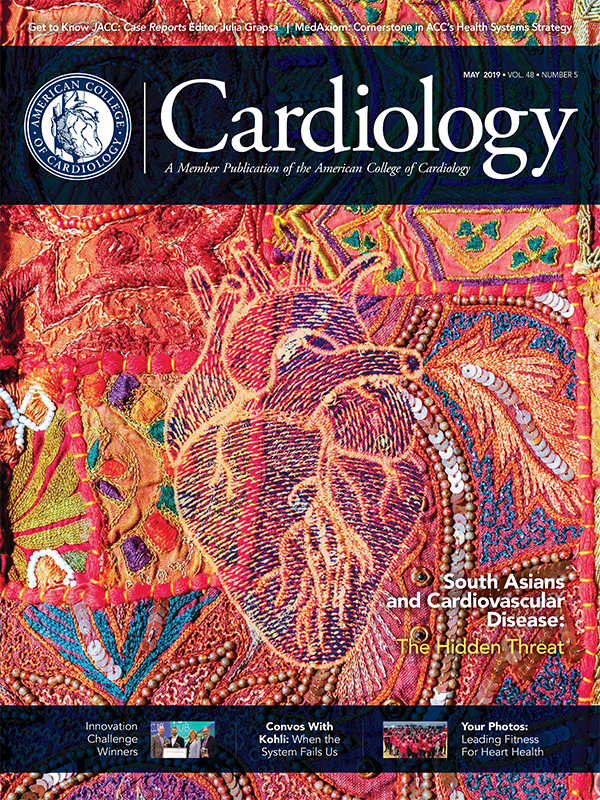For the FITs | Left Main Coronary Artery Interventions

Scrubbing in for my first cardiac catheterization case as a first-year fellow was exciting enough, but the added exhilaration realizing it was a left main coronary artery (LMCA) PCI was almost too much to handle! We had been taught in medical school that LMCA disease was treated only by CABG.
However, with significant advancements in the field of interventional cardiology, PCI of left main disease has evolved to have comparable outcomes with CABG in selected patients.
Background
The first LMCA PCI was performed by Andreas Gruentzig, MD, FACC, in 1978 with plain old balloon angioplasty. Subsequently, bare metal stent technology has been used and, in the contemporary era, drug-eluting stents (DES.) Adjunctive tools such as intravascular imaging with IVUS and mechanical cardiovascular support have also emerged as important tools when considering a LMCA PCI strategy.1-5
Prominent Trials Addressing LMCA PCI
SYNTAX was a landmark study comparing LMCA PCI using first-generation DES with CABG.6 The study showed a similar rate of major adverse cardiac events (MACE) with PCI and CABG at five years in patients with SYNTAX score <33. Notably, even in lower SYNTAX scores, there was a higher incidence of target lesion revascularization (TLR) in the PCI group compared with CABG.1,2,4,6
The EXCEL and NOBLE trials were performed to assess the outcomes of second-generation DES in left main PCIs compared with CABG.7,8 In EXCEL, a total of 1,905 patients with a low-intermediate SYNTAX score of <33 were randomized to PCI with an everolimus-eluting stent vs. CABG.
At three years, a primary endpoint event had occurred in 15.4 percent of the PCI group and 14.7 percent of the CABG group (difference, 0.7; upper 97.5 percent confidence [CI] limit, 4.0 percentage points; p=0.02 for noninferiority; hazard ratio, 1.00; 95 percent CI, 0.79-1.26; p=0.98 for superiority).
The secondary endpoint event of death, stroke or myocardial infarction (MI) at 30 days occurred in 4.9 percent and 7.9 percent of the PCI and CABG groups, respectively (p<0.001 for noninferiority; p=0.008 for superiority).
In NOBLE, 1,201 patients with a low-intermediate SYNTAX score were randomized to PCI using a biolimus-eluting stent vs. CABG. Major adverse cardiac or cerebrovascular events (MACCE) after five years were 28 percent (121 events) for PCI and 18 percent (80 events) for CABG.
The hazard ratio was 1.51 (95 percent CI, 1.13-2.00), exceeding the limit for noninferiority (1.35), and was significant for superiority of CABG compared with PCI (p=0.0044). Notably, one year rates of MACCE in the two groups were the same (7 percent [42 events] in each group; p=1.00).
Techniques For LMCA PCI
As with elsewhere in the coronary tree, isolated left main stenting is more straightforward compared with a bifurcation strategy. The SYNTAX score has been used to classify the complexity of left main lesions.
Moreover, given the complexity of the left main bifurcation intervention, close attention should be given to assessing the lesion angiographically using the Medina classification, a commonly used tool to assess bifurcation lesions, including left main lesions, which takes into account the disease in the main branch as well as the side branch.9
In addition, assessment is needed of the functional significance of the vessel stenosis, which can be accomplished using fractional flow reserve (FFR) as well as imaging modalities such as IVUS or optical coherence tomography (OCT). As a general rule, left main FFR ≤0.8 and/or left main artery area <6 mm2 indicate significant, flow-limiting left main disease for which revascularization is indicated.1,2
The one-stent provisional technique is typically the preferred technique for simple left main bifurcation lesions when the side branch (usually the left circumflex artery) disease has <70 percent stenosis and <10 mm in length. The presence of certain lesion characteristics in simple left main bifurcation disease are best treated with a two-stent technique.
These characteristics include: 1) thrombus-containing, severe calcifications; 2) multiple bifurcations; 3) main branch disease >25 mm in length; and 4) bifurcation angle ≥70 or ≤45 degrees.
In contrast, patients with complex left main bifurcation disease, with side branch disease of >70 percent stenosis and/or side branch lesion length >10 mm, usually require a two-stent technique that includes the DK-Crush or the Culotte technique.10,11 The angle between the left anterior descending (LAD) and circumflex help determine which two-stent technique to use.
The DK-Crush technique, compared with the Culotte technique, has been associated with lower rates of MACE when the angle between the LAD and circumflex is >70 degrees.1,2,4
Wiring of both the side and main branches is recommended, with the most difficult branch being wired first. Stent sizing usually follows the LAD diameter, with optimizing the stent diameter in left main artery using balloon dilation after deployment to ensure adequate stent apposition. This can be confirmed using IVUS or OCT after stent deployment.1
Adjunctive Tools
Atherectomy (rotational or orbital) can be used effectively in severely calcified left main lesions. It is important to note that atherectomy should only be used for the shortest duration possible in select cases of severely calcified lesions, because its use is associated with higher risk of MI.
A significant proportion of patients with left main disease have a reduced ejection fraction (EF), which adds to the risk of PCI in these patients. As such, mechanical circulatory support using a percutaneous ventricular assist device is recommended in patients with an EF <35 percent undergoing unprotected left main PCI.1
Complications
Given that the LMCA is the major blood supply to the left ventricle, patients with left main disease tend to be sicker. Therefore, procedural and postprocedural complications are of paramount concern when planning LMCA PCI. These include death, fatal arrhythmias, MI, arterial dissection, cardiogenic shock and stroke. TLR is another late complication of LMCA PCI; not surprisingly, its incidence has significantly declined with the use of the newer generation DES compared with older stents.1,5,7
Conclusions
Left main PCI can be performed safely in selected patients. Close attention to lesion characteristics on coronary angiography and intravascular imaging, as well as clinical variables, are all important elements in planning for left main intervention. A multidisciplinary heart team discussion also adds value when evaluating PCI of the left main coronary artery.
References
- Rab T, Sheiban I, Louvard Y, et al. JACC Cardiovas Interv 2017;10:849-65.
- Avula HR, Rassi AN. Curr Atheroscler Rep 2018;20:3.
- Stankovic G, Milasinovic D. Circ Cardiovasc Interv 2018;11:e007363.
- Kirtane AJ, Bonow RO. JAMA Cardiol 2017;2:1089.
- Park DW, Park SJ. Circ Cardiovasc Interv 2017;10.
- Mohr FW, Morice MC, Kappetein AP, et al. Lancet 2013;381:629-38.
- Mäkikallio T, Holm NR, Lindsay M, et al. Lancet 2016;388:2743-52.
- Stone GW, Sabik JF, Serruys PW, et al. N Engl J Med 2016;375:2223-35.
- Zlotnick DM, Ramanath VS, Brown JR, Kaplan AV. Cardiovasc Revasc Med 2012;13:228-33.
- Zhang JJ, Chen SL. EuroIntervention 2015;11 Suppl V:V102-5.
- Erglis A, Lassen JF, Di Mario C. EuroIntervention 2015;11 Suppl V:V99-101.
Clinical Topics: Arrhythmias and Clinical EP, Cardiac Surgery, Heart Failure and Cardiomyopathies, Invasive Cardiovascular Angiography and Intervention, Noninvasive Imaging, Atherosclerotic Disease (CAD/PAD), Implantable Devices, SCD/Ventricular Arrhythmias, Atrial Fibrillation/Supraventricular Arrhythmias, Aortic Surgery, Cardiac Surgery and Arrhythmias, Cardiac Surgery and Heart Failure, Acute Heart Failure, Mechanical Circulatory Support, Interventions and Coronary Artery Disease, Interventions and Imaging, Angiography, Nuclear Imaging
Keywords: ACC Publications, Cardiology Magazine, Drug-Eluting Stents, Coronary Angiography, Shock, Cardiogenic, Tomography, Optical Coherence, Heart-Assist Devices, Constriction, Pathologic, Coronary Artery Disease, Schools, Medical, Heart Ventricles, Dilatation, Angioplasty, Balloon, Coronary, Myocardial Infarction, Stents, Atherectomy, Angioplasty, Balloon, Stroke, Stroke Volume, Cardiac Catheterization, Arrhythmias, Cardiac, Thrombosis
< Back to Listings



